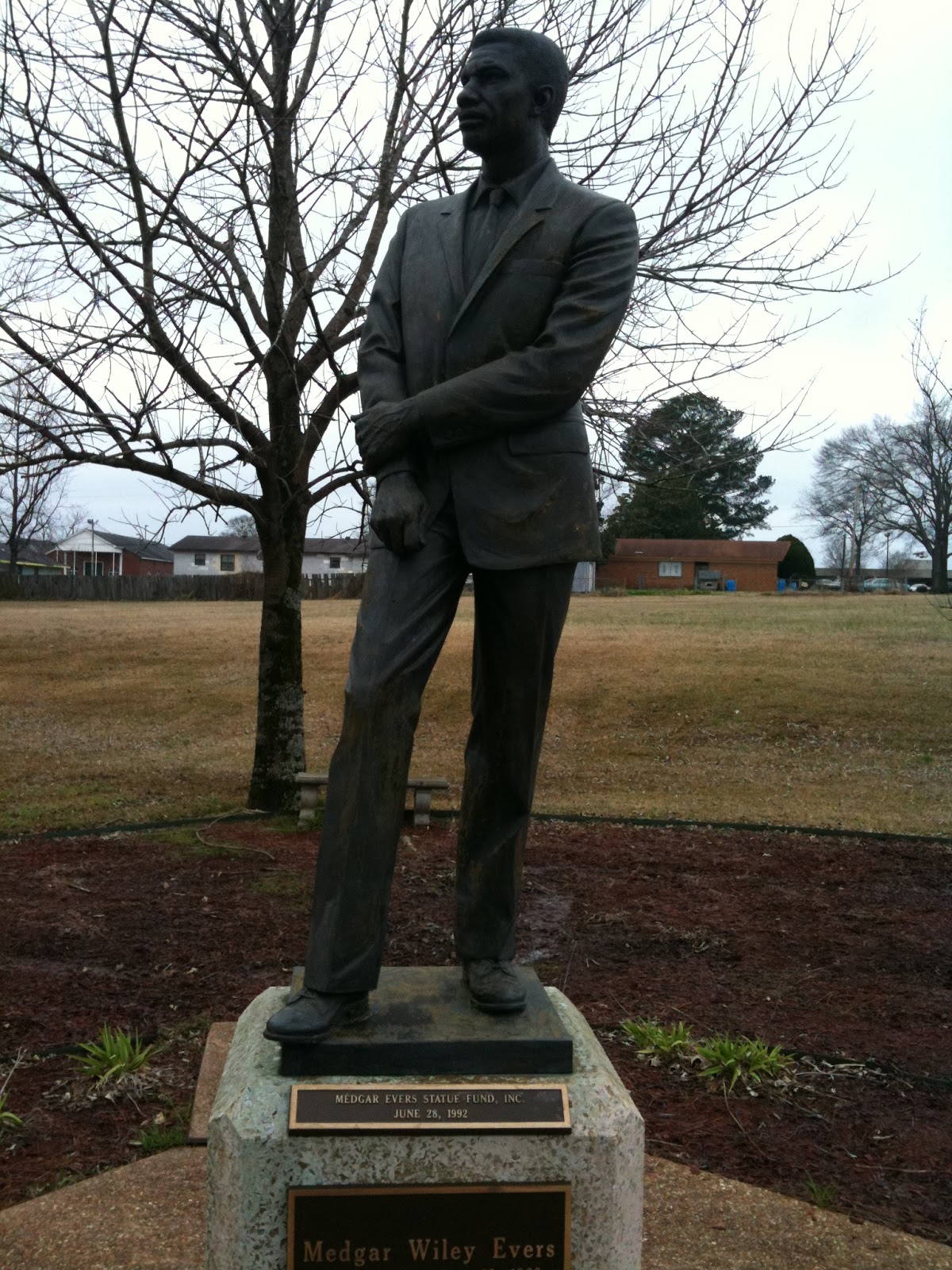One thing my father would always emphasize was a need to know and remember from whence we have come. Not just our personal genealogy, but also the struggles and sacrifices of those who have come before us. ON this, the 50th Anniversary of the Death of Civil Rights Activist, Medgar Evers, I am posting a terse bio provided by Wikipedia.
Medgar Wiley Evers (July 2, 1925 – June 12, 1963) was an African American civil rights activist from Mississippi involved in efforts to overturn segregation at the University of Mississippi. After returning from overseas military service in World War II and completing his secondary education, he became active in the civil rights movement. He became a field secretary for the NAACP.
Evers was assassinated by Byron De La Beckwith a member of the White Citizens' Council. As a veteran, Evers was buried with full military honors at Arlington National Cemetery. His murder and the resulting trials inspired civil rights protests, as well as numerous works of art, music, and film.
In the early morning of June 12, 1963, just hours after President John F. Kennedy's speech on national television in support of civil rights, Evers pulled into his driveway after returning from a meeting with NAACP lawyers. Emerging from his car and carrying NAACP T-shirts that read "Jim Crow Must Go," Evers was struck in the back with a bullet fired from an Enfield 1917 rifle; it ricocheted into his home. He staggered 9 meters (30 feet) before collapsing. He died at a local hospital 50 minutes later.
Mourned nationally, Evers was buried on June 19 in Arlington National Cemetery, where he received full military honors before a crowd of more than 3,000.
On June 21, 1963, Byron De La Beckwith, a fertilizer salesman and member of the White Citizens' Council (and later of the Ku Klux Klan), was arrested for Evers' murder.
District Attorney and future governor Bill Waller prosecuted De La Beckwith. Juries composed solely of white men twice that yeardeadlocked on De La Beckwith's guilt.
In 1994, 30 years after the two previous trials had failed to reach a verdict, De La Beckwith was brought to trial based on new evidence. Bobby DeLaughter was the prosecutor. During the trial, the body of Evers was exhumed from his grave for autopsy. De La Beckwith was convicted of murder on February 5, 1994, after having lived as a free man for much of the three decades following the killing (he was imprisoned from 1977 to 1980 for conspiring to murder A. I. Botnick). De La Beckwith appealed unsuccessfully, and died at age 80 in prison in January 2001.
Evers's legacy has been kept alive in a variety of ways. Evers was memorialized by leading Mississippi and national authors, both black and white: Eudora Welty, James Baldwin, Margaret Walker and Anne Moody. In 1963, he was awarded the Spingarn Medal from theNAACP. In 1969, Medgar Evers College was established in Brooklyn, New York as part of the City University of New York. Evers's widow, Myrlie Evers co-wrote the book For Us, the Living with William Peters in 1967. In 1983, a movie was made based on the book. Celebrating Evers's life and career, it starred Howard Rollins, Jr. and Irene Cara as Medgar and Myrlie Evers, airing on PBS. The film won the Writers Guild of America award for Best Adapted Drama. On June 28, 1992, the city of Jackson, Mississippi erected a statue in honor of Evers. All of Delta Drive (part of U.S. Highway 49) in Jackson was renamed in Evers' honor. In December 2004, the Jackson City Council changed the name of the city's airport to "Jackson-Medgar Wiley Evers International Airport" (Jackson-Evers International Airport) in honor of him.
His widow Myrlie Evers became a noted activist in her own right later in life, eventually serving as chair of the NAACP. Medgar's brother Charles Evers returned to Jackson in July 1963 and served briefly in his slain brother's place. He remained involved in Mississippi civil rights activities for many years and resides in Jackson.
On the 40-year anniversary of Evers' assassination, hundreds of civil rights veterans, government officials, and students from across the country gathered around his grave site at Arlington National Cemetery to celebrate his life and legacy. Barry Bradford and three students—Sharmistha Dev, Jajah Wu and Debra Siegel, formerly of Adlai E. Stevenson High School in Lincolnshire, Illinois—planned and hosted the commemoration in his honor. Evers was the subject of the students' research project.
In October 2009, Navy Secretary Ray Mabus, a former Mississippi governor, announced that USNS Medgar Evers (T-AKE-13), a Lewis and Clark-class dry cargo ship, would be named in the activist's honor. The ship was christened by Myrlie Evers-Williams on November 12, 2011.





